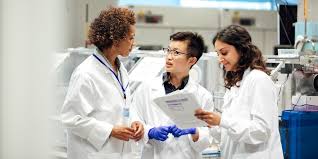5 Stepped-Protocol for the Drug Development | Clinical Research Courses
The drug development process still remains one of the
prominent areas that requires intensive research for creating effective
pharmaceutical products. This pharmaceutical industry needs to be constantly
upgraded with time to help human bodies adapt for novel diseases. Here are 5 steps
that are followed to create the medicine or drugs following a set of protocols:
Step I: Discovery & development
New medications are typically
discovered by experts/researchers. Thousands of chemicals may be suitable for
advancement as a medical treatment at this point in the process. When a
potential molecule is chosen for development, researchers do tests to learn
more about:
·
Its prospective advantages and methods of operation.
·
The ideal dosage for the medication (such as by mouth or
injection).
·
Toxicology is the term used to describe side effects or
unfavorable outcomes.
·
How it differs depending on the gender, race, or ethnicity of
a group of individuals.
·
How it interacts with different and similar medications and
therapies.
Step II: Preclinical Research
Before testing a medicine on humans,
scientists must determine if it has the potential to cause significant damage,
often known as toxicity. There are two categories of preclinical research:
·
In Vivo
·
In Vitro
For preclinical laboratory
investigations, the FDA requires researchers to follow good laboratory
practices (GLP), as described in medical product development rules. Preclinical
investigations are often small in size and they contain information on toxicity
levels and dosage range.
Step III: Clinical Research
While preclinical research provides
answers to fundamental issues regarding a medicine's safety, it is not a
replacement for studies of how the drug will interact with the human body. The
term "clinical research" refers to research that involves human investigations
or trials. As the developers construct the clinical trial, they will evaluate
what they aim to achieve for each of the Clinical Research Phases and initiate
the Investigational New Drug Process (IND), which must be completed before
clinical research can proceed.
A developer must have sufficient
evidence from two major controlled clinical studies before filing a marketing
application to end this procedure. Clinical research industry possesses great
opportunities to potential professionals. Various professional courses are
offered that help students become professionals in this field.
Refer to Clinical research courses with guaranteed placement
offered by TechnoBridge
Step IV: FDA Drug Evaluation
If a drug developer has proof from
early testing, preclinical and clinical studies that a medicine is safe and
effective for its intended purpose, the business can file a marketing
application for the drug. The FDA review team extensively reviews every
submitted medication data before deciding whether
or not to approve it.
Step V: Post-Market Drug Safety
Monitoring by the FDA
Despite the fact that clinical trials
give valuable information regarding a drug's efficiency and safety, the drugs’
safety would still be unknown at the time of approval. As a result, the real
picture of a product's safety changes during the months and even years that a
product spends on the market.



Simple, clear, and informative. for more information visit us on pharmacovigilance courses
ReplyDelete